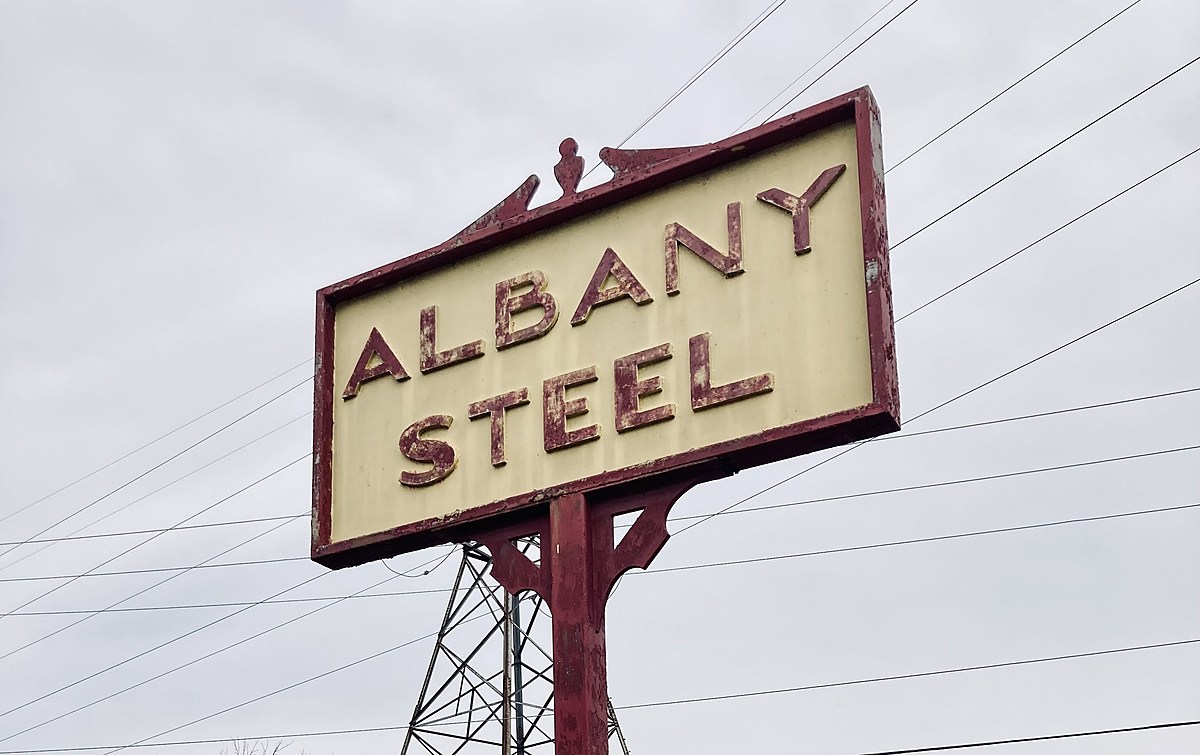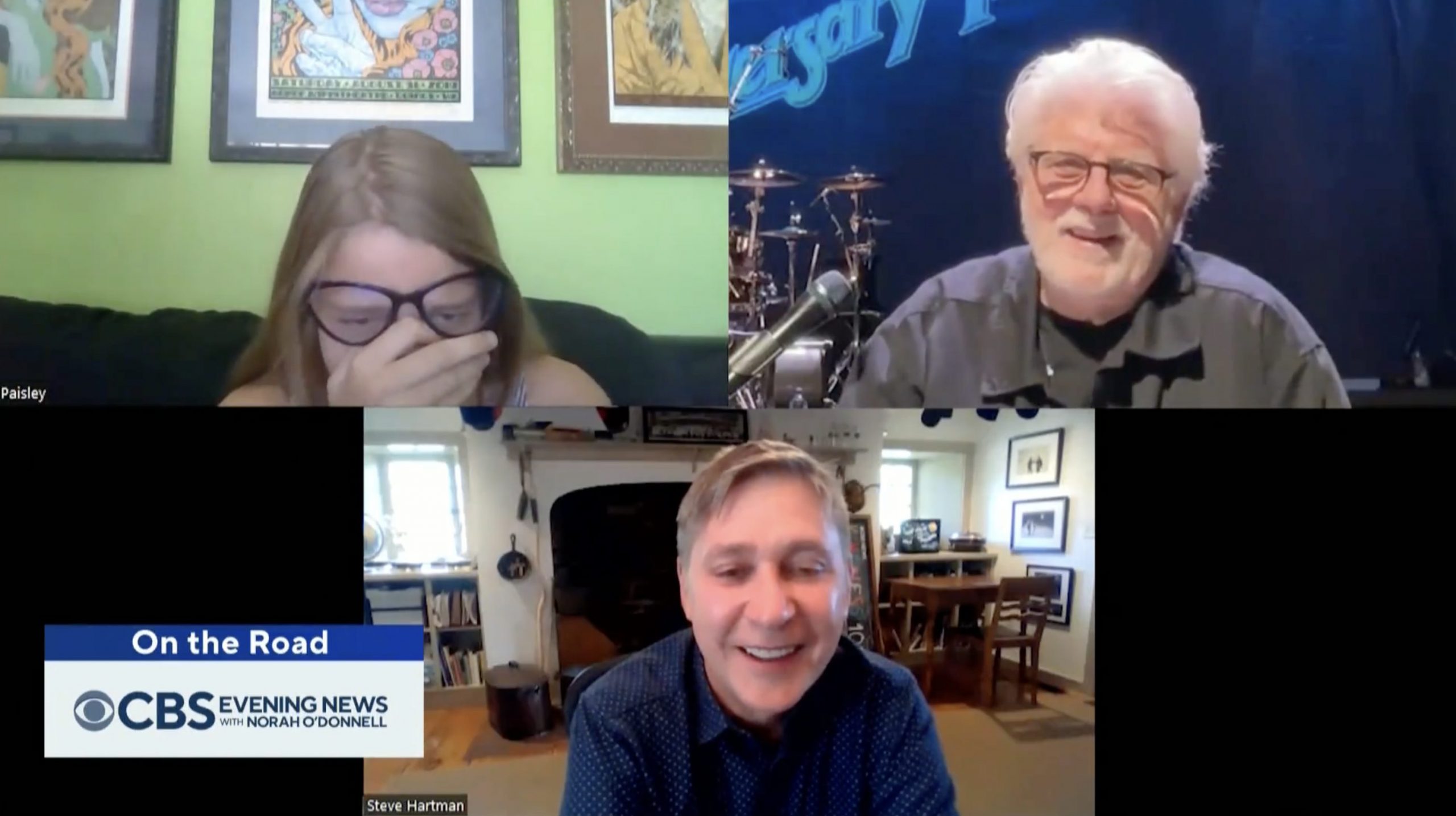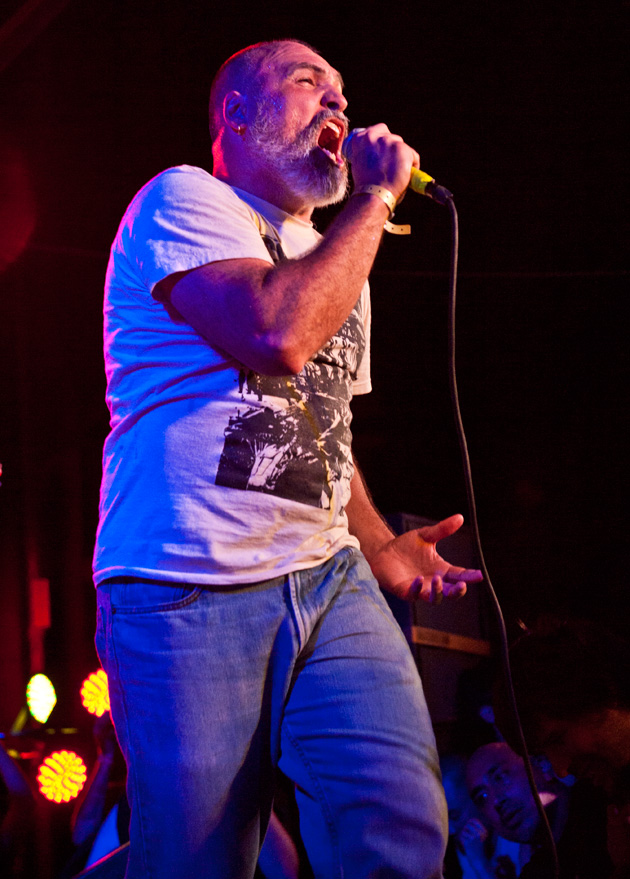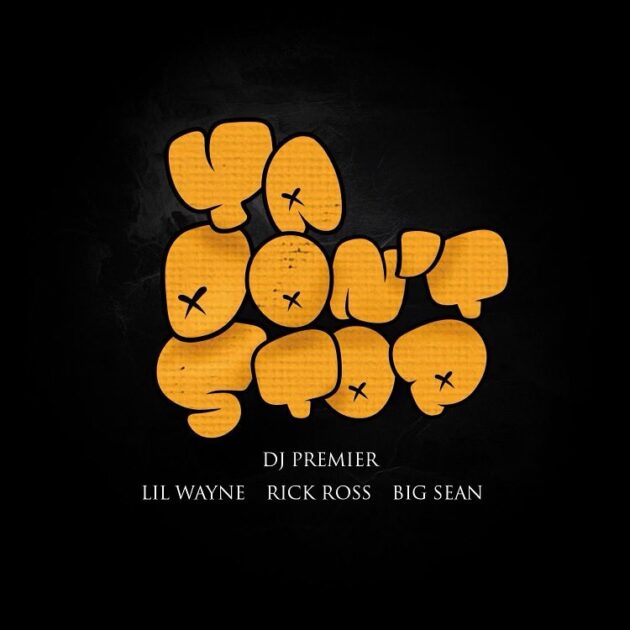In this feature, writer Diana Hurlburt explores the heavy music scene in upstate New York.
The loud kids’ practice space crouches in a drab corner of north Albany under the shadow of Nipper, the city’s de facto mascot. An English import, the four-ton dog caps a former RCA distribution building at the edge of the Warehouse District; just a street over, an industrial supply store’s facade screams ANY METAL. ANY SIZE.
North Albany Studio functions as an incubator for upstate New York’s music scene: a hallway of doors, behind which local stalwarts practice in rooms barely large enough to house more than one Orange speaker cabinet. There’s an intimacy to the rehearsal spaces, a years-long fusion of sweat, spit, and echoing distortion, the scene’s tight Venn diagram made physical. Cold Kiss eschew their room’s graffiti, walls redolent with bog-standard girlie fare, while Wrasp recently inherited their space from fellow doomsters HUSH, who decamped for a larger room and more amps at their recently-completed studio in Hudson, leaving behind no graffiti but a c. 2014 track list. Chaotic post-post-hardcore act Prize practice down the hall, and local-supergroup forefathers Stoker and Spiritkiller down from that. The highest concentration of the Capital Region’s harshest and heaviest is inside NAS: totally unremarkable from the outside, going places inside.
…
Hush’s NAS legacy – a track list.
…
It’s been this way for nearly the lifespan of heavy music in Albany. Not only is NAS one of the few functional practice options for indie bands around Albany, the makeup of those bands and their surrounding apparatus have retained a core of scene lifers. Certain people come up in conversation as tastemakers and touchstones; certain bands will be referenced on fliers until the Hudson overruns its banks. Albany’s heavy music heyday is still well within local living memory–Sensible, if you consider that heavy metal was only born in 1968, hardcore some ten years later. Albany’s heavy music revival is happening as we live and breathe, fueled by the unstoppable force of young blood and the immovable object of old-head fortitude.
North Albany Studio
‘Fuck a scene’
Veteran vocalist Charles Cure (HUSH, Crisis Actor, Spiritkiller) has inhabited a NAS practice space, in one band or another, since 2006. “That’s one of the problems with starting a band in Albany,” he says. “There’s no practice space.” The refrain start a band! has been echoing through local venues loudly of late; it’s an exhortation Cure likes to hear, particularly from younger musicians, but isn’t convinced Albany’s music infrastructure is strong enough to support an explosion of new groups in the pandemic era. The Capital Region’s fragmentation stems in large part from the 2014 closure of landmark venue Valentine’s, an absence in the downtown landscape from which the city has yet to truly recover. In a metro area barely cracking a million residents, memory is a load-bearing support. Valentine’s was a bones-making experience for many Cap Region youngsters; with two venues in one building, it was the ideal locale for touring bands as well as ultra-DIY townie lineups, exposing Albany kids to notables like Kowloon Walled City on one end and their best friends’ acts on the other (or sometimes both; the KWC gig also featured locals HUSH and Maggot Brain). This equalizing effect–the notion that a band you formed with buds could play the same space as your favorite big-timers–had a lasting impact on listeners. When the Valentine’s block was decimated to make way for Albany Med’s hospital complex, the extreme music scene fractured. Fabled punk bar QE2 eventually became The Fuze Box, a mile or so across town from Valentine’s, and struggled under assorted ownerships to maintain consistency and vitality; on the edge of the Saint Rose college campus, Bogie’s made a credible stand until 2013. Northern Lights, the area’s go-to for mid-tier bands, was a forty-minute drive north into what would become NXIVM territory. Its purveyor Ted Etoll facilitated the “Step Up Presents” era of Albany hardcore and metal; today he runs pandemic baby Empire Live, the latest iteration of Northern Lights and Upstate Concert Hall. The sole Albany destination for mid-tier bands, Empire Live and its gritty brother Empire Underground have boasted commercial metal and hardcore bills since opening in 2021. Empire Underground, managed by long-time local Mike Valente, has proven a welcome niche for local acts to wiggle into, as Crisis Actor, Invoke Thy Wrath, halo bite, Sunbloc, and others have found opening spots for acts like Vein.FM, Possessed, and upstate heroes Drug Church.
…
…
But the scene still feels the post-Valentine’s sting. It’s a truism passed down from elders to youngsters, the echo of what Albany had and lost. “Valentine’s was a building with two clubs in it, so it was easy to do any kind of show you wanted there,” Cure relates. “A 150-cap bar downstairs where you could do a reasonable DIY show or you could do a show upstairs with a 400-500 capacity and pack that out. There was a whole scene around Bogie’s and that also went by the wayside. There’s no legendary venue in Albany anymore.” To some extent, that’s the story of Albany’s life as a city. The oldest continuously-chartered city in the country, it’s virtually unknown outside the state and barely thought about within greater New York except as the seat of tepid political machinations and thereby the source of New York’s ills. Its factory-town cousin across the Hudson, Troy, is even smaller–yet musically, Troy’s impact has lasted longer and reached farther than any locals would have expected.
…
…
Says Cure, “One of the biggest surprises of my life is that Troycore got big after the year 2000.” Ben of promotion duo 2 Dead Hummingbirds agrees: “I love seeing big hardcore bands, like God’s Hate, repping [Troycore].” The peak Troycore years of the mid-90s established mammoth local acts like Stigmata, Section 8, Withstand, Cutthroat, Lariat, and One King Down, most musically and socially at cross-purposes with the dominant sounds of NYHC and LIHC. Few of the vital Troycore acts made it long-term, but as social media was adopted by music nerds across the country, grainy YouTube sets took the upstate sound wide. Whether Troycore had a concrete sonic style or was more about attitude and aesthetics remains a local debate; however, most area musicians agree that what set Troycore apart from its downstate compatriots was a decidedly metallic edge prior to the rise of metalcore. “All of [the big Troycore bands], when I listen to them now, have so much metal bleeding out of every pore,” Cure says. “Cutthroat, for instance, had a big Pantera influence.” The most defiantly metal of Albany’s current scene, trad shredders Ice Queen, agree, citing the thrashy sound that dominated Albany metal acts in the 80s and 90s. This sort of admixture remains a defining feature of Cap Region music. Many of the most active participants don’t draw hard-and-fast lines between genres, let alone waste time parsing subgenres, and nearly all are found at any gig that happens to be loud, heavy, fast, or any combo thereof. “Regional distinctions become more of the social aspect,” opines Cold Kiss vocalist Kyle Chard. Sound engineer and musician Ryan Slowey (Maggot Brain, Tree Walker) is more blunt. “Fuck a scene,” he says. “What I want to know is whether there’s a community.”
…
Graffiti in Troy
…
The tight Albany community has historically been a major draw; regionally, Albany was the big city, with all the big-city perks like record stores, concert venues, and skate culture. Slowey, who grew up in the hills of nearby Rensselaer County, recalls trips into the capital that eventually, inevitably, led to a college experience at one of Albany’s liberal arts schools. “My dad would fill the family van with me and my redneck friends and drive us into Albany,” he says, drives that occasionally took them past the dump in Cohoes to the defunct, storied concert hall Saratoga Winners.Many other long-time residents have similar origin stories. Prize’s Seth Eggleston, Wrasp’s Joe Henneghan, and man-about-scene Jay Krak (Crisis Isolation and other ventures) all hail from the terrain ringing two frigid SUNY outposts, Potsdam and Plattsburgh. In the late Nineties and early Aughts, Krak was responsible for the lion’s share of local shows in Plattsburgh, booking his friends’ bands and acts making the drive from Potsdam at an ice cream shop and a legendary punk house, 946 Mason. During the musicians’ early twenties, many made the move downstate to Albany (or in the case of Cure, returned home) and set up shop. The relationship between the rural North Country and upstate still holds strong, with an essential corridor running between Potsdam and Albany.
Today, Sunflo’er is the biggest Potsdam success story since the region’s noted sandstone. The band have toured into other parts of New York in the past year, including a weekday stint at Troy’s tiny but lively El Dorado, a bar known for fried pickles and mixed bills. The Troy-side crowd, between El Dorado, No Fun, and the Hangar, is a reliable crew of 30-something scenesters and college kids, peppered with the occasional set of graying parents and brave high schoolers. At worst, an audience might be neutral; at best, they already know the words to the songs a subterranean group is about to perform onstage.
…
…
The relationship certain out-of-town bands–Sunflo’er, New Jersey’s Lunar Blood and Sunrot, Worn Thin and other Lower Hudson River acts–have with Cap Region musicians and the warm welcome out-of-towners receive upon landing in Albany speak not only to well-established partnerships but the importance of expanding the local community, both to Capital Region transplants and nearby residents. Repositioning Albany as a tour stop not to be missed for out-of-towners is a key element, the locals believe, in coaxing the city back into a solid B-market for niche-but-known acts. Embracing the pandemic-era influx of Brooklynites has slowly shifted Troy in particular toward the culture and infrastructure modeled by arty Hudson to the south. The newest and easily most successful of the local venues is No Fun. A beer bar with a small stage, No Fun is a musical gourmand characterizing the current Cap Region scene; inside of a week, their live nights feature lo-fi, hip-hop, and hardcore bills, all with roughly equal attendance. No Fun courts punk darlings Gel, NWBHM legends Satan, and hyper-local doomers Carnwennan with equal enthusiasm, providing a professional audio experience for bands and a good time for fans. No Fun’s owner and creative director, August Rosa, is also a musician and scene lifer, his biography borne out by the recent “Valentine Week” show series in February 2023, a tribute to–where else– long-lost Valentine’s. In the wake of the well-received Bacchanalia Music Festival in 2022, and in light of No Fun’s immediate wave of success, it’s not hard to imagine Troy someday gaining its own Basilica.
…
Inside of No Fun
…
‘Keep that take’
As a recording engineer and musician, Slowey is well-positioned to hear all the newest music as it’s happening… and to be extremely enthusiastic about the Capital Region revival. “There’s a spirit to Carnwennan that I love,” he says of the newest doom act in town; he’s referring to the transportive experience of watching the band live, particularly its guitarist, but also to what the stage show says about Carnwennan’s art and ambition. Debuting on the lineup for a March Fuze Box show starring Chained to the Bottom of the Ocean, Carnwennan bring a theatrical impact to their live show and cinematic scope to their music that sets them apart from brother bands Wrasp and HUSH. Deploying a towering sound that segues seamlessly into an unbroken reverie, Carnwennan onstage appear absorbed in the music and in each other as musicians. The band’s flavor is due in large part to their frontman, a noted local artist who’s delivered custom merch for Escuela Grind, The Acacia Strain, and other noisemakers. According to him, what’s behind Carnwennan’s sound is simple: “Slow and heavy just feels good.” Like many area acts, Carnwennan will record their first EP with Slowey at HOVVL Hudson, the home base studio built by HUSH member Jordan Cozza. Prize, Sunbloc, Crisis Actor, HUSH, House of Worship, and a score of other, less heavy groups have recorded at HOVVL since it opened doors in 2021, most with Slowey as sound engineer. He’s beloved by Cap Region musicians for an attitude that’s simultaneously no-nonsense and warm, expansive taste, and a commitment to preserving a band sounding the way it wants to sound. He loves the “little warts” attendant to live performances, seeking especially to work with bands who have the chutzpah to let loose in the studio, always encouraging a group unsure of the balance between polish and truth to “keep that take.” To some extent, Slowey’s become HOVVL’s house engineer, although the studio is open for booking by other recording engineers too. Manager Cozza envisions it as welcoming to all flavors, stripes, and creeds, not just as a hub for heavy, loud, and extreme. Cozza, who works with record labels in his day job, is about to launch a label out of HOVVL as well. “It’s still in the early stages,” he says, “but I’ve had meetings with a few artists.” Darkest Records, by the look of its initial social media posts, will focus on the low end of the musical spectrum.
…
…
Once this ambition gets off the ground, HOVVL will join two other labels with local zip codes but national reach: Closed Casket Activities and Fuzz Records. Some artist overlap exists between CCA and Fuzz Records, including downstate heavies Age of Apocalypse, but each label cultivates its own flavor and dynamic. CCA’s reach is impressive, with artists like Primitive Man, No/Mas, and Xibalba populating its backlist, in addition to bands closer to home, such as Long Island staple Incendiary and Lowell, MA’s Fleshwater, Fuzz Records prioritizes Cap Region luminaries like Scum Couch, the art-noise brainchild of HUSH and Self Defense Family drummer Mark O’Brien, proggy ironists Stoker, and the final album from Ryan Slowey’s band Maggot Brain. Fuzz Records honcho Josh Cotrona is another facet of Albany’s community tendrils, having nabbed albums from Maryland noise kings Reaper’s Gong, Philly shoegazers they are gutting a body of water, and New York City’s well-named Brain Burn. With longstanding connections in the area, Cotrona and Fuzz Records breed loyalty; one of the most exciting and accessible local acts in years, Prize, quip that they’re “Team Fuzz for as long as he’ll have us.” With access to a well-stocked recording studio, a classically-trained and long-seasoned engineer, an audience ethic of involvement and enthusiasm, and regional record labels, Cap Region bands feel supported in their ambitions, whether that’s to stage a national bid or to simply make records they’re proud of.
-Diana Hurlburt
In part two, we’ll explore the re-emerging Albany basement scene and the forces making Cap Region music crucial to an expanding audience.



